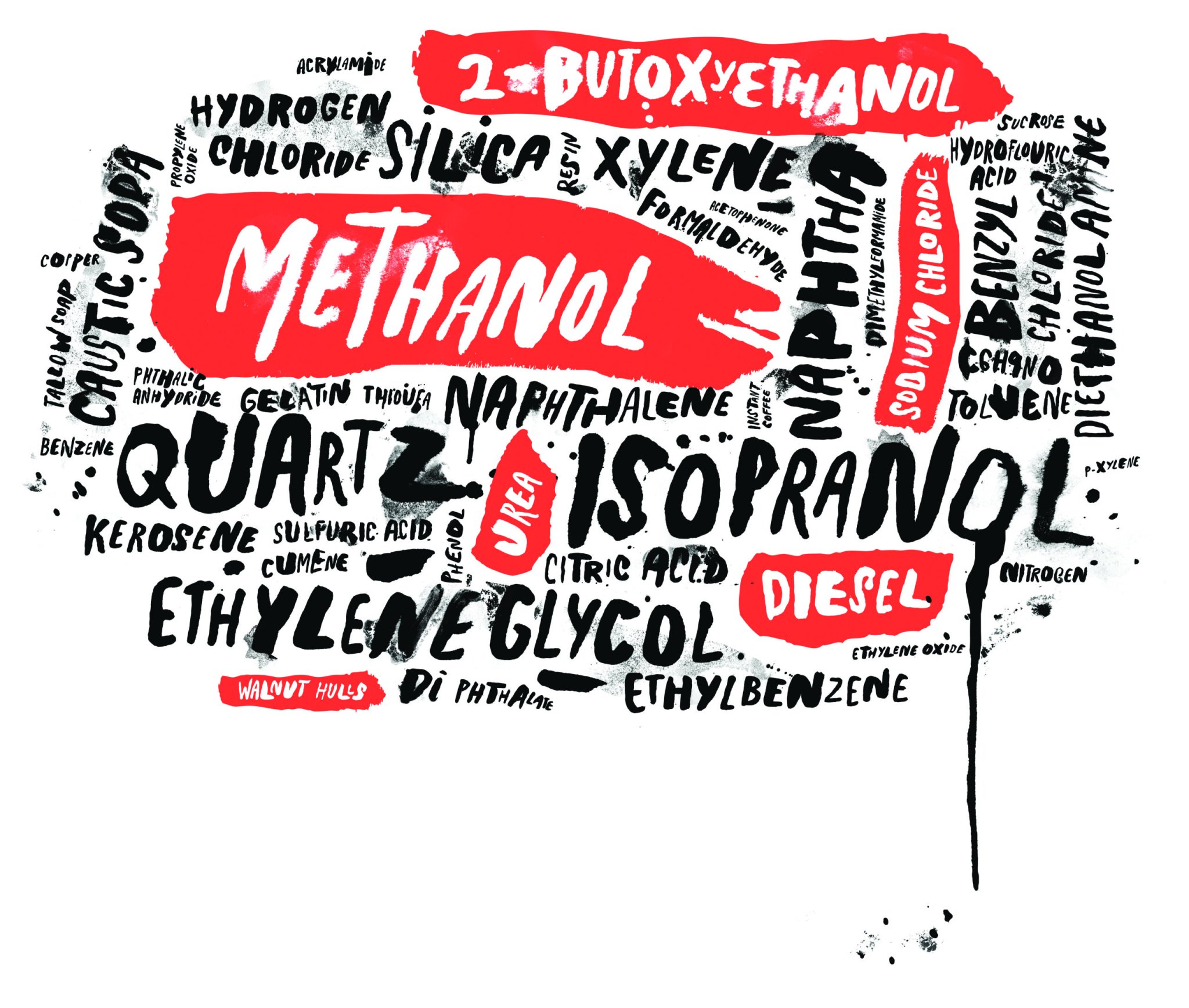

Over 100 billion gallons—that’s how much fluid fracking wells inject into the U.S. each year. The high-pressure slurry cracks underlying shale, releasing oil and natural gas trapped inside. But fracking’s rise raises questions about water pollution. Although scientists have linked individual cases of contamination to fracking, a 2016 EPA report on its safety was inconclusive. Companies don’t have to disclose what is actually in the slurry. Like Coca-Cola’s formula, these chemical cocktails are trade secrets, so it can be hard for scientists to gauge risk. Here are some components, from run-of-the-mill to rare, squeezed out of cagey corporations.
Methanol
An alcohol often found in antifreeze that serves to winterize fracking fluid. If you drink it, you could go blind—or die.
2-Butoxyethanol
This solvent keeps the slurry stable at high temperatures. But don’t inhale: It can damage your lungs and red blood cells.
Sodium chloride
Aka: table salt. It stabilizes fracking fluids. Even small amounts seeping into rivers and lakes can kill freshwater fish.
Walnut hulls
Fracking fluid isn’t all bad. Gritty shells show promise as a fracking proppant— they prop open fractures made in the shale.
Urea
The urine component undergoes a reaction that makes ammonia, using up water in the process. This means less waste left behind.
Diesel
It makes the fluid slick, lowering its friction. But its cancer-causing components might contaminate groundwater.
Source: In 2011, a Congressional report released the top 100 chemicals used in fracking—minus secret, proprietary compounds.
This article was originally published in the March/April 2017 issue of Popular Science, under the title “What The Frack.”
